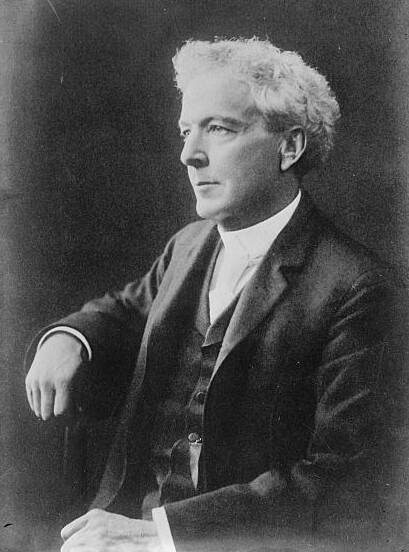Luther Burbank was born in Massachusetts in 1849 the 13th child of 15 kids. He spent his childhood on his family’s farm in Lancaster where his formal education was at the Lancaster County Academy. At the age of 18, after his father passed away, he was left an inheritance which he used to purchase his own farm and got the idea that he could develop a new potato in response to the Irish Potato Famine. This was the origin of the Russet potato.
From there, he moved to California and would go on to develop hundreds of hybrids, varieties, and strains of plants including the Shasta daisy, a spineless cactus, a mulberry tree for a futile attempt at a California silk industry, and some weird mutant abominations e.g. a cross between tobacco and petunias, a thing called a pomato which crossed a tomato with a potato, and the monstrosity called the Paradox Walnut that reaches 60 feet in a mere 15 years.
He caused stirs in the scientific community with many considering him a charlatan or just a simple plant breeder or nurseryman. Some of these views may have been due to his fame but some criticism was probably justified for instance he wasn’t a diligent researcher and doesn’t seem to have developed anything with strict scientific methods.
His views on selection and breeding of plants would cross over to humans and, although rejecting certain aspects or theories, he became a believer in eugenics and a member of a eugenics group that promoted laws that made inter-racial relations illegal in many states, involuntary sterilizations, and was borrowed later by Nazi Germany. And this was what he was criticized most for.
His spiritual beliefs weren’t always mainstream either. Burbank was a devout follower of Hindu guru Paramahansa Yogananda who was one of the first yogis to settle in America and bring Kriya yoga and meditation to prominence. He wasn’t apprehensive sharing his views on everything from his lack of faith in the American educational system to God. Case in point, shortly before his death, he gave an interview with The San Francisco Bulletin where he called himself an “infidel” because of his non-belief in an afterlife and spoke of Jesus as nothing more than a regular dude. You can imagine how Christian society took all that.
Burbank would die a complicated human in 1926 at the age of 77 after a heart attack that resulted in some kind of gastrointestinal illness that caused some pretty violent hick-ups.

Image: American botanist Luther Burbank (1849-1926) 1909 Unknown (Bain News Service, publisher), Public domain, via Wikimedia Commons
Smith, Jane S. (2010). The Garden of Invention: Luther Burbank and the business of breeding plants. New York: Penguin Group. pp. 1–2. ISBN 978-0143116899.
Anderson, Neil O.; Olsen, Richard T. (February 1, 2015). “A Vast Array of Beauty: The Accomplishments of the Father of American
Ornamental Breeding, Luther Burbank”. HortScience. 50 (2): 161–188. doi:10.21273/HORTSCI.50.2.161. ISSN 0018-5345.
Burbank, Luther (1907). The Training of the Human Plant. New York, N.Y.: The Century Company, The de Vinne Press. OCLC 1393659
Dreyer, Peter, A Gardener Touched With Genius The Life of Luther Burbank, # L. Burbank Home & Gardens; New & expanded edition
(January 1993), ISBN 0-9637883-0-2